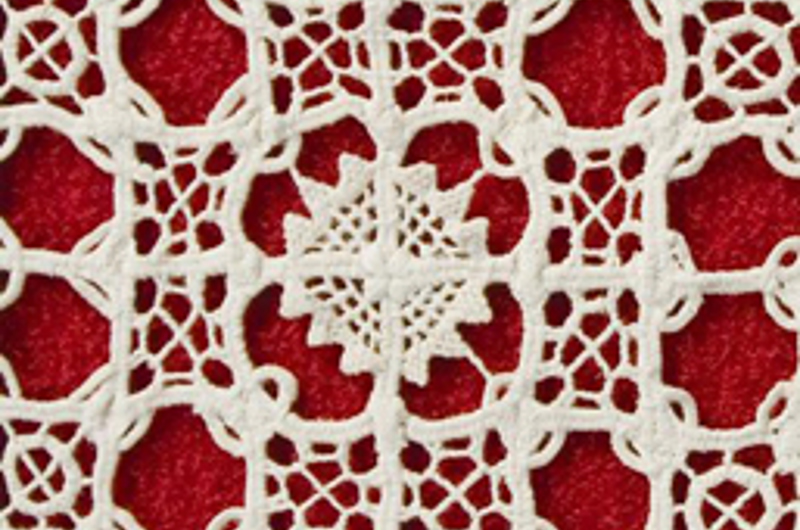Around 1850 ”Udklipshedebo” appeared. The needlewomen now cut holes across the warp and the weft of the fabric. The holes were filled with needle lace and became the motifs’ core. In reversed ”Udklipshedebo” the motifs were cut out of the fabric and seamed together with needle lace and Hedebo rings.
Hedebo in Variations
Hedebo Embroidery is not just one form of embroidery; it consists of seven distinct variations. From a cultural history perspective, it is more interesting to compare these seven variations than to debate which might be the 'real' Hedebo Embroidery. The variations reveal the remarkable creativity of the Danish peasant women on the Heath. It’s as if the women were constantly asking themselves: 'What would happen if I reversed the stitching?

Hedebo edges
Hedebo edges are the oldest variation of Hedebo Embroidery. The early edges were small and the edge was sewn with Danish buttonhole stitching and consisted of scallops and points. Later the edge was made wider and consisted of many close rows, with the holes in the rows forming the pattern.

Counted thread work
Counted thread work is known from the beginning of the 18th century. The patterns are often geometrical. Counted thread work is sewn with satin stitching over counted threads of the fabric. The technique was known all over Europe and was called “punto reale” in Renaissance Italy.

Drawn thread work
Textiles with so-called drawn thread work have been preserved from the second half of the 18th century. Here the women drew out the threads to make open work nets over the whole width of the fabric, and filled the open work with figures such as animals and trees. Drawn thread work is also known from Renaissance Italy.

Square cut work
In the first decades of the 19th century a variation called square cut work blossomed. Threads were carved or cut out of the fabric in small squares, which formed open figures, often representing animals, people and trees. The figures in square cut work were diametrically opposed to the tight motifs in the open net work of drawn thread work.

“Hvidsøm”
Hvidsøm was developed immediately after square cut work. The faithfulness of the early variations to the warp and the weft of the fabric were now challenged. The baroque style inspired these compositions of twined tendrils or vines, with flowers and leaves around small sewn pieces of net work.

"Baldyring"
Around 1840 the delicate and tight net work of ”Hvidsøm” developed into “Baldyring”, where open work was filled with needle lace and wreathed with vines and leaves. ”Baldyring” has many similarities with Italien reticella stitching, and reflected its rococo style.

"Udklipshedebo"

